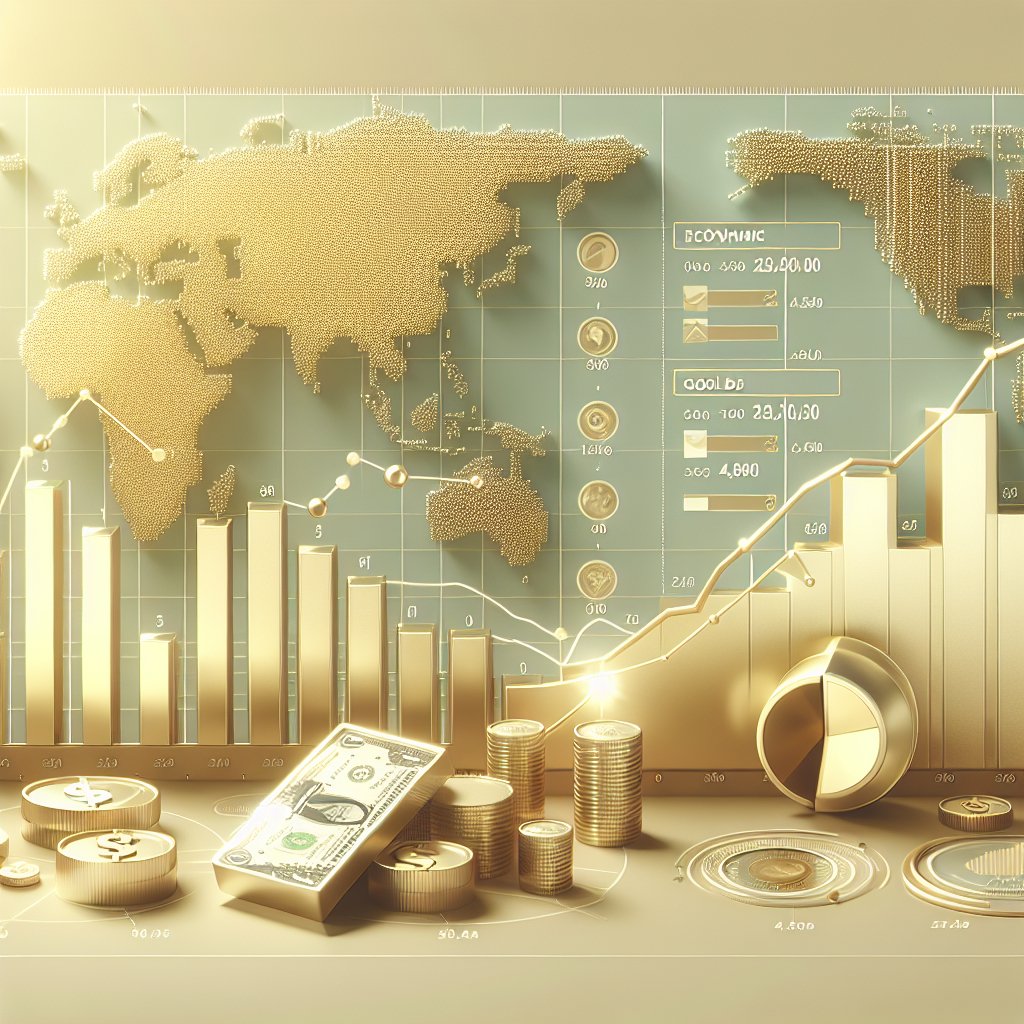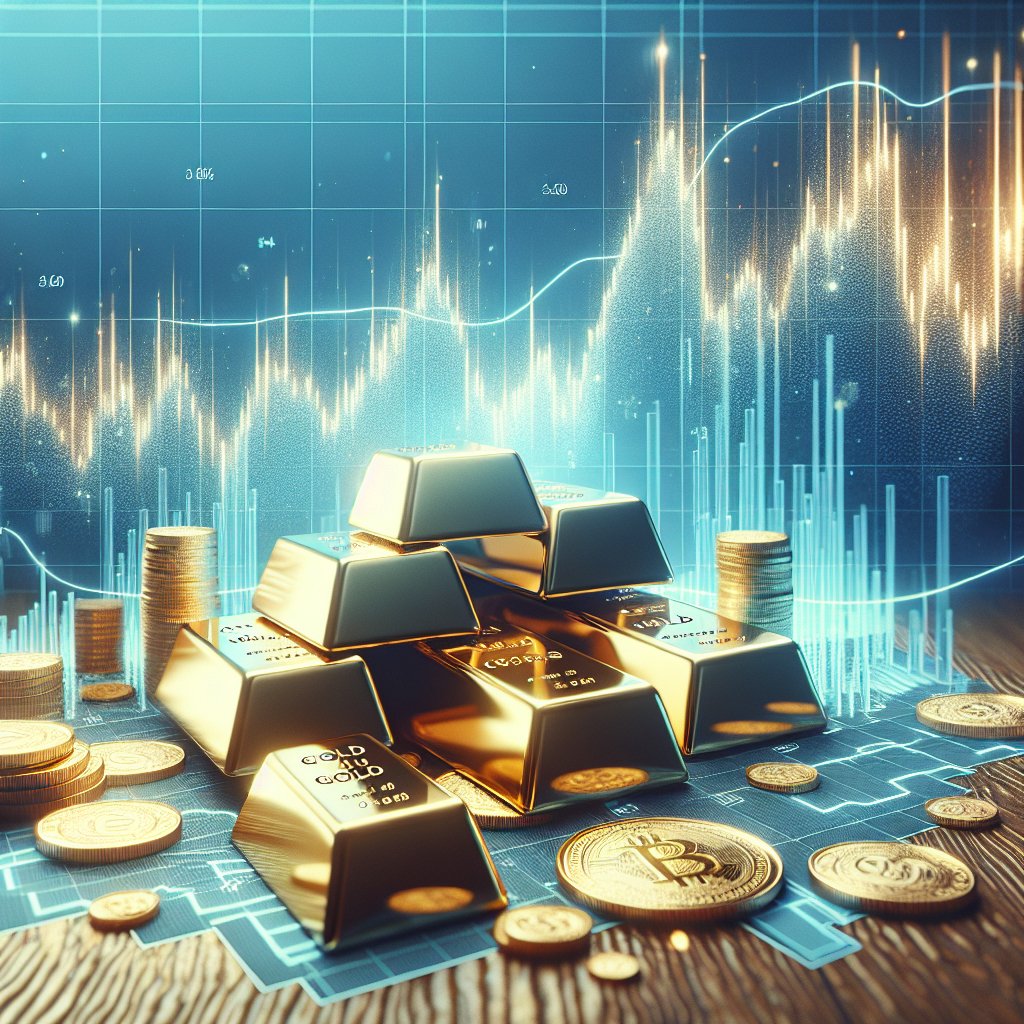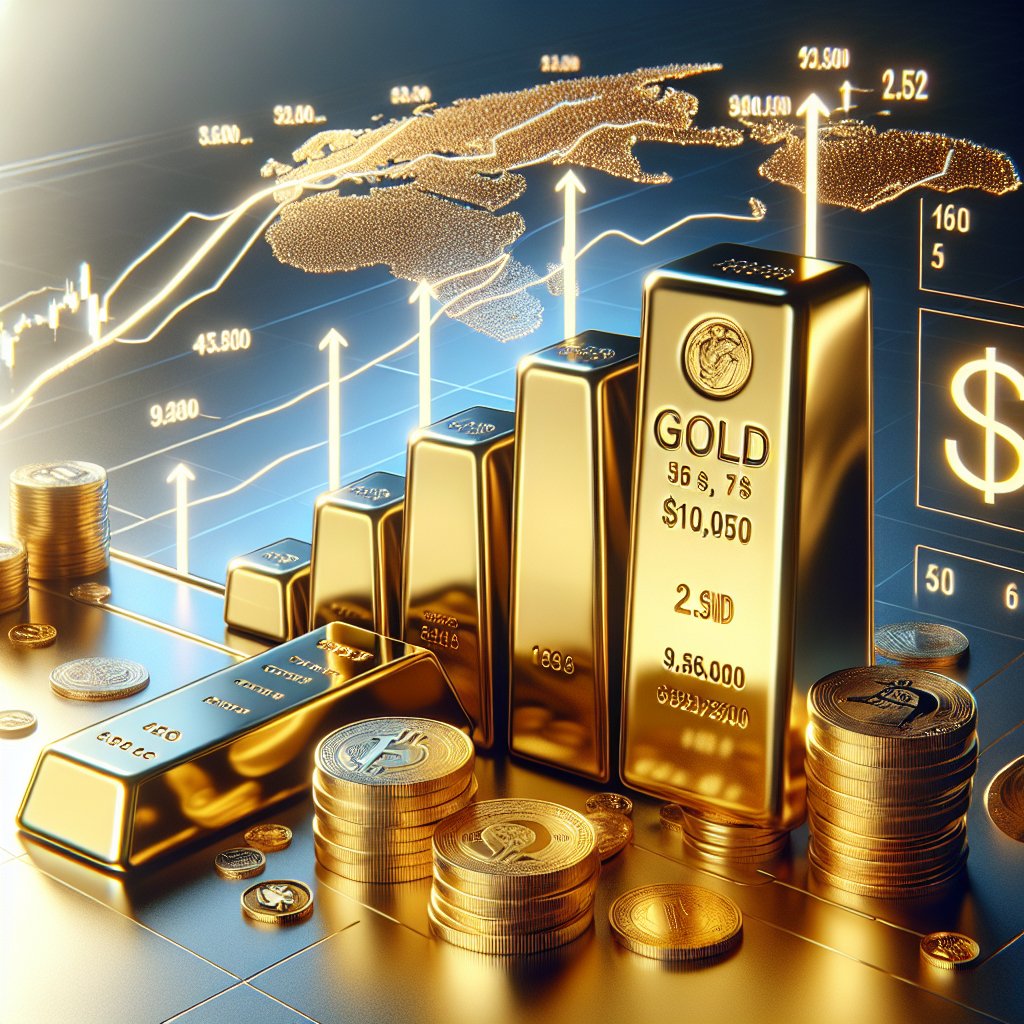Gold has long been considered a safe haven for investors, especially during times of economic uncertainty. Its price is influenced by a myriad of factors, including geopolitical tensions, currency fluctuations, and changes in supply and demand. This article delves into the trends of gold prices across major economies, examining the factors that drive these trends and their implications for global markets.
Factors Influencing Gold Prices
The price of gold is subject to a complex interplay of factors that can vary significantly across different economies. Understanding these factors is crucial for investors and policymakers alike.
Economic Indicators
One of the primary drivers of gold prices is the state of the global economy. During periods of economic growth, investors may prefer to invest in stocks and other assets that offer higher returns. Conversely, during economic downturns, gold often becomes more attractive as a safe haven asset. Key economic indicators such as GDP growth, unemployment rates, and inflation can significantly impact gold prices.
For instance, when inflation is high, the purchasing power of currency decreases, leading investors to seek refuge in gold, which is perceived as a stable store of value. Similarly, during times of economic uncertainty or recession, gold prices tend to rise as investors look for security.
Monetary Policy and Interest Rates
Central banks play a pivotal role in influencing gold prices through their monetary policies. Interest rates, in particular, have a direct impact on gold prices. When interest rates are low, the opportunity cost of holding gold decreases, making it more attractive to investors. Conversely, higher interest rates can lead to a stronger currency, reducing the appeal of gold.
For example, the Federal Reserve’s decisions on interest rates can have a significant impact on gold prices. A dovish monetary policy, characterized by low interest rates, often leads to higher gold prices as investors seek alternatives to low-yielding bonds and savings accounts.
Gold Price Trends in Major Economies
Gold price trends can vary significantly across different economies due to varying economic conditions, policies, and market dynamics. This section explores the trends in some of the world’s largest economies.
United States
The United States is one of the largest markets for gold, and its economic policies have a profound impact on global gold prices. In recent years, the U.S. has experienced fluctuating gold prices due to changes in monetary policy, trade tensions, and economic growth rates.
During periods of economic uncertainty, such as the 2008 financial crisis and the COVID-19 pandemic, gold prices in the U.S. surged as investors sought safe-haven assets. Additionally, the Federal Reserve’s monetary policy, particularly its interest rate decisions, has been a key driver of gold price trends in the country.
China
China is both a major consumer and producer of gold, making it a significant player in the global gold market. The country’s economic growth, currency policies, and demand for gold jewelry and investments all influence gold prices.
In recent years, China’s growing middle class has driven increased demand for gold, both as an investment and for jewelry. Additionally, the Chinese government’s policies on gold imports and exports can impact global supply and demand dynamics, influencing prices.
India
India is one of the largest consumers of gold, with a strong cultural affinity for the precious metal. Gold plays a significant role in Indian weddings and festivals, driving demand throughout the year.
The Indian economy’s performance, currency fluctuations, and import duties on gold are key factors influencing gold prices in the country. For instance, a weaker Indian rupee can make gold more expensive for local consumers, affecting demand and prices.
Global Implications of Gold Price Trends
The trends in gold prices across major economies have far-reaching implications for global markets and investors. Understanding these implications is crucial for making informed investment decisions.
Investment Strategies
Gold is often seen as a hedge against inflation and currency devaluation, making it an essential component of diversified investment portfolios. Investors need to consider global economic conditions, interest rates, and geopolitical risks when formulating their investment strategies involving gold.
For instance, during times of economic uncertainty or geopolitical tensions, investors may increase their allocation to gold to protect their portfolios from potential losses in other asset classes.
Impact on Currency Markets
Gold prices can also influence currency markets, particularly in countries with significant gold reserves or production. Changes in gold prices can affect a country’s trade balance, currency value, and overall economic stability.
For example, a rise in gold prices can lead to an appreciation of the currency in gold-producing countries, as higher gold revenues improve the trade balance. Conversely, countries that rely heavily on gold imports may experience currency depreciation when gold prices rise.
Conclusion
Gold price trends across major economies are shaped by a complex interplay of economic, political, and market factors. Understanding these trends is essential for investors, policymakers, and market participants seeking to navigate the global financial landscape. As the world continues to face economic uncertainties and geopolitical challenges, gold is likely to remain a critical asset for those seeking stability and security in their investment portfolios.












